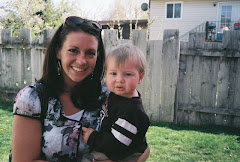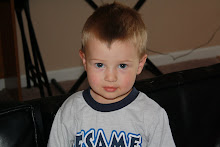I just wanted to let everyone know about the Air Force training I just completed in San Antonio. I was stationed at Brook’s Air Force Base in San Antonio for two weeks, where I did Aerospace Medicine training. Actually, it was more of an introduction/sales pitch to get us interested in becoming Flight Surgeons. A Flight Surgeon is a doctor for a specific Flight Squadron. You are that squadron’s only doc, so you would be responsible for everyone in that squadron, plus their families. If they get deployed, then you would go with them. You would fly in any aircraft that they fly in. So, you could be assigned to an F-16 Flight Squadron, C-130, C-17, etc. It will depend on what you can physically handle. If you can’t handle all the G forces that an F-16 pilot has to experience during combat maneuvering, then you would be assigned to a C-130 Flight Squadron or something similar. A Flight Surgeon is considered the top of the medical profession in the Air Force.
At my training, I had a lot of fun. I flew a T-38, which is the training aircraft for pilots, in a flight simulator. So, not the actual thing, but pretty close to it. I took off, flew around a bit, and then landed the plane. The simulator was set up like an actual cockpit of a T-38. I was also able to use the parachute simulator. They drop you at an altitude of 5000 feet, and you have a target on the ground that you should aim for. Through the helmet that I wore, I could see that I was falling but without the sensation of it, and I knew where my target was. You can actually steer the parachute. The coolest, but also most physically challenging part of the training was the centrifuge. The centrifuge is a machine that spins you around while sitting in a pod that is setup as an aircraft cockpit. You can’t see out of it. They first had me do a gradual increase up to 5 G’s while staying relaxed, and then brought it to a stop. Then I went straight to 3 G’s and held it for 15 seconds and stopped. Finally, I went straight to 5 G’s and held it for 30 seconds. The gradual increase was the hardest because I was relaxed the whole time, and wasn’t allowed to use the techniques I learned to help prevent decreased blood flow to the brain. I had tunnel vision, and felt like I was going to lose my vision, or in other words go to sleep, but I didn’t. In the fast ascent to 3 G’s and 5 G’s I was able to use the straining technique and breathing technique which allowed better blood flow to the brain, so my vision was normal and I felt fine except for the weight from the G’s of course. I have video of it, so I will try to make it available for you all to watch. It’s kind of funny to watch.
Another neat experience was our tour at the Brooke’s Army Medical Center (BAMC). This is where a lot of the injured soldiers from Iraq go to recover. I was able to meet some of them and it was a humbling experience. One soldier had burn scars all over his body and if you saw a picture of him before the injury you wouldn’t even know it was him. Everywhere I turned there were soldiers with missing limbs. These people are truly heroes. The majority of the patients are from 18-25 yrs of age. Twenty percent of injured soldiers go back to the field. Others would go if they could but their injuries are too severe. The facilities at this Medical Center are amazing. They have technology that nobody else has. It is used to get these injured soldiers back to or close to a normal life.
My second Monday there, we went by bus to Houston (3-4 hrs away) to tour NASA. We were able to see how the astronauts train, we saw the Mission Control Centers that were in the movies: Apollo 13, Armageddon, etc. (Houston we have a problem!). People were working at those desks and talking w/astronauts at the Space Station. We saw them on their big screen floating around doing their work. Air Force docs can also work for NASA and be assigned to a group of astronauts and go to space with them. Cool stuff! Some of the other things we went over in the training were: how to transfer injured soldiers from the field onto ambulances and aircrafts, we went in an altitude chamber and wore the helmets and oxygen masks that pilots wear and experienced scenarios that pilots might, such as a hole in the plane causing rapid depressurization. Overall, the training was very informative and it gave us a taste of what it would be like to be a Flight Surgeon.
In the evenings and on the weekend I was able to see some of the tourist sites, such as the Alamo and the Riverwalk. I went tubing down the Comal River, and went to SeaWorld for free (Military gets in for free at SeaWorld and at Busch Gardens).
Monday, June 29, 2009
Subscribe to:
Post Comments (Atom)






.jpg)








1 comment:
What is that joke about riding in a car and the little kid yells for his dad to slow down b/c his cheeks are flopping with the speed. Ya well that is what came to mind while watchin you in the cocpit. Sounds like you had a lot of fun Ryan.
Lacey-Are you counting down the days? Good luck this week!
Post a Comment